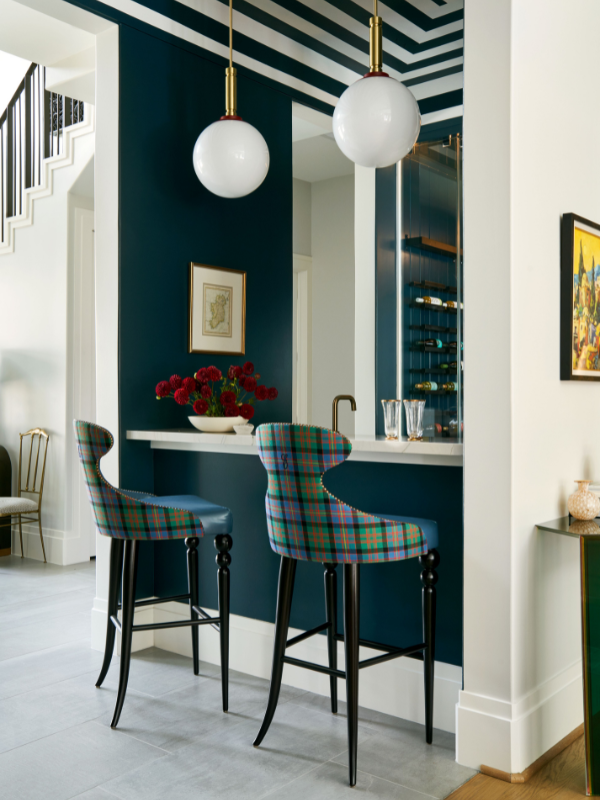Checked upholstery fabrics (whether plaid, tartan, or other patterns) have a long history in interiors all over the world. They continue to be relevant because of their practicality and their ability to tie an interior to its owners’ heritage. As designers, we decorate with tartan or plaid upholstery fabric to connect with our clients’ history, add texture to a space, or create a traveled, world-faring feel without leaning too kitschy. Whether reupholstering an antique stool or commissioning a custom fabric to transform a brand-new piece, plaid can make quite the impact in your interior. Read on to learn why we feel plaid upholstery is truly timeless rather than a fleeting trend.
But First, What’s the Difference Between Plaid, Tartan, and Checked Fabric?
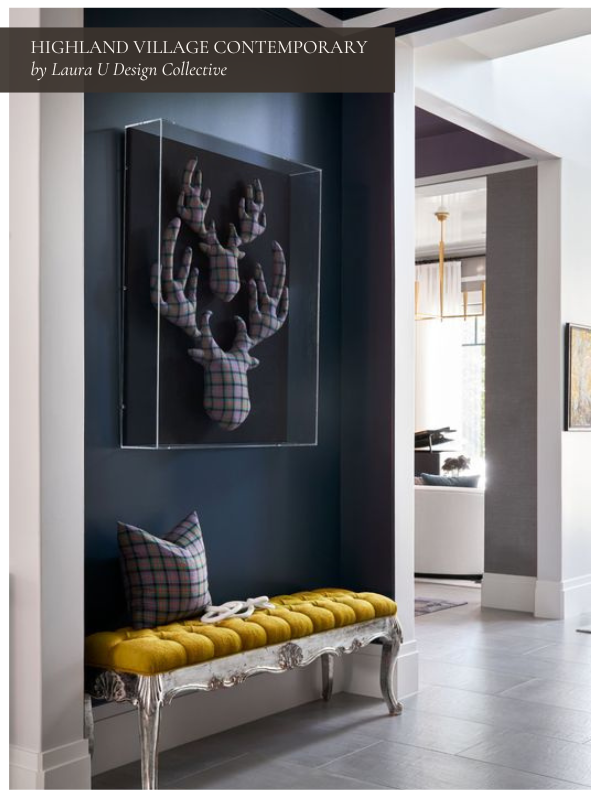
Although the terms are often used interchangeably, tartan, plaid, and checked fabrics have distinct, individual histories. Tartan is the most specific, of course. It is a patterned cloth that was originally woven in Scotland and is composed of crisscrossed stripes in multiple colors; particular patterns were associated with clans and regions. We are most familiar with tartans of green, blue, and red, but yellow, black, and brown were used in some of the earliest tartans because their dyes came from natural sources.

In an American context, plaid has become a catch-all term for similar crisscross patterns, but in Scottish tradition, it originally referred to the wool cloth itself, which was often worn as a large wrap. Checked fabrics are simpler still, built from even squares of alternating colors, and appear in many weaving traditions worldwide; you’ll find them everywhere from gingham in Southeast Asia and Europe to bold checked designs in West African textiles. Regardless, these patterns can entirely transform (or reinforce) the interior design of your room.
Why We Love These Timeless Patterns in Interiors
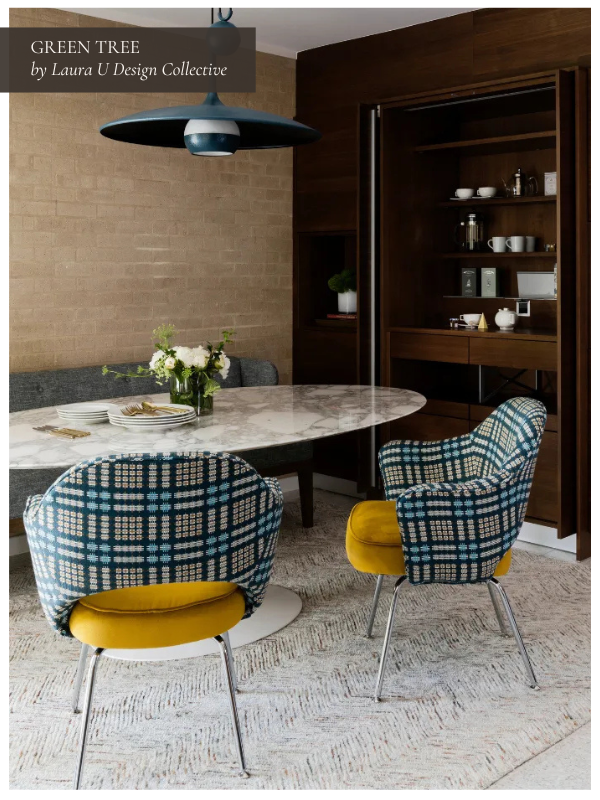
Plaid, tartan, and checked fabrics are absolutely not a passing fad. They have been used in interiors for centuries because they balance familiarity with individuality, texture with tone, color with geometry. The repeating grid in plaid makes a room feel more ordered and rhythmic. At the same time, the variation in color and scale can make that same pattern feel either traditional or contemporary.
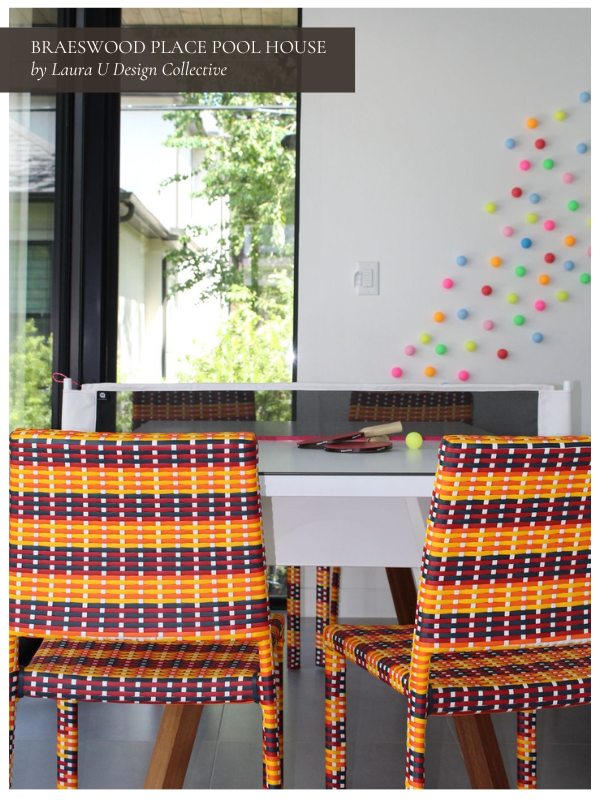
At Laura U Design Collective, we’ve specified plaids in projects where heritage or travel was central to both their design and their experience as a family. Plaid upholstery is an easy way to make interiors both personal and enduring. While we have commissioned custom tartans for clients, a few of our favorite plaids include the following from vendors like Kravet and Schumacher.
Three Plaid Fabrics We Adore for Timeless Interiors
Woodrow Plaid
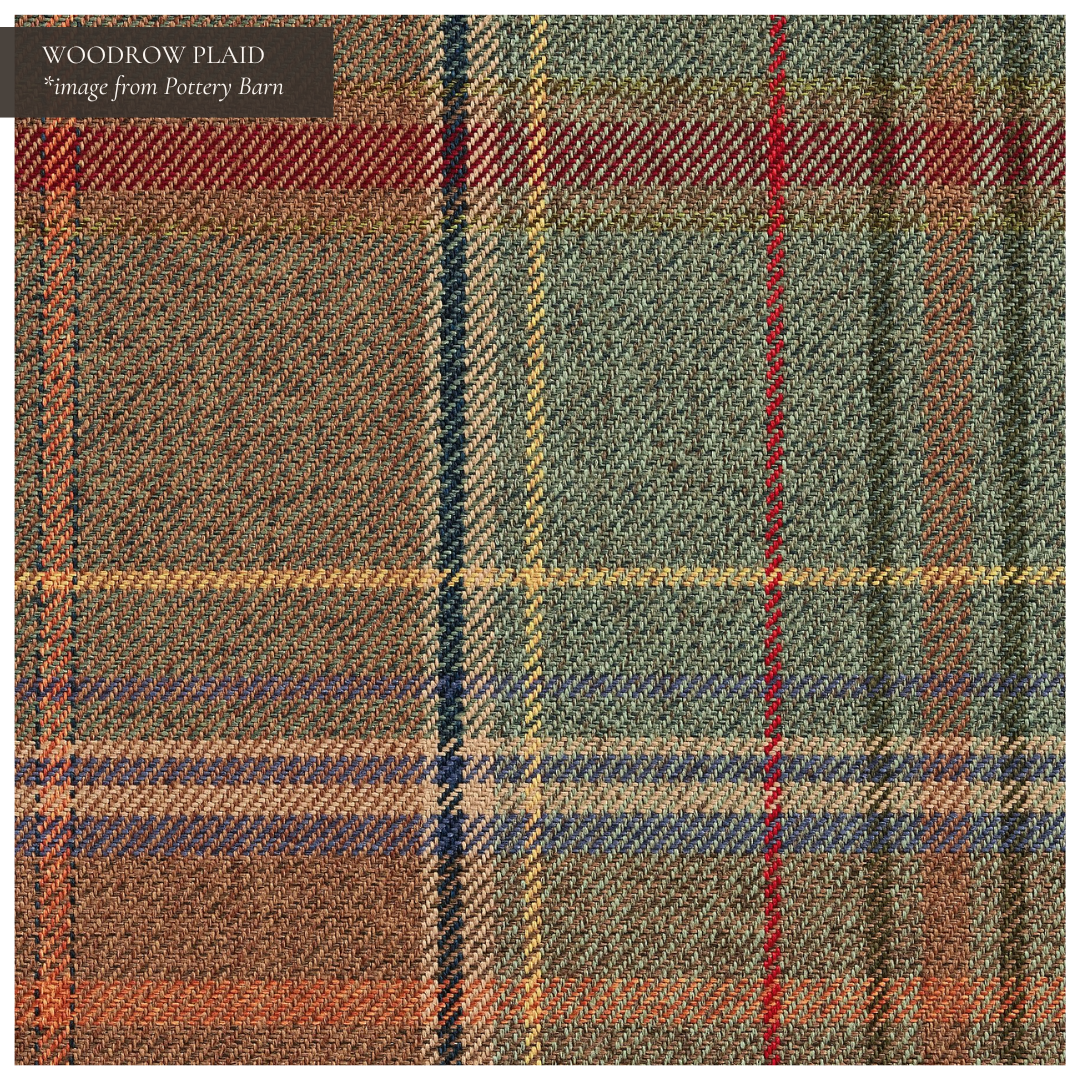
With its subtle rainbow color palette, we adore this Woodrow Plaid carried by Pottery Barn. This plaid is woven in muted green with bands of russet, gold, navy, and red. The stripes are even in scale and create a clear, repeatable grid with unique hatch marks that make the fabric feel wholly contemporary.
Because it includes both warm and cool tones, this plaid can tie together a wide range of finishes in a single room. We like it for dining chairs, benches, or smaller accent pieces where color variety adds interest without the need for additional patterns.
Blackburn Merino Plaid
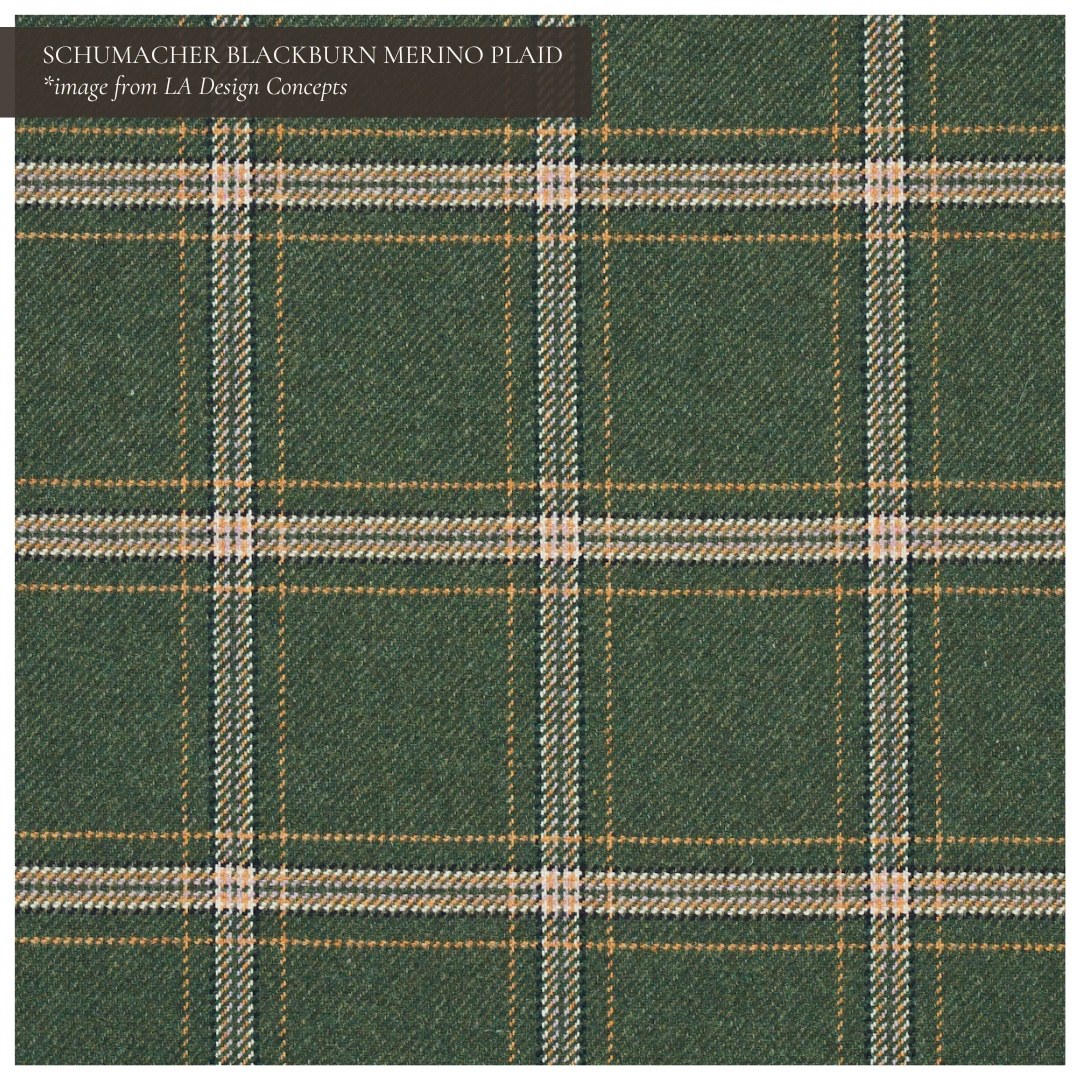
Schumacher’s Blackburn Merino Plaid is woven in 100% merino lambswool and made in the United Kingdom. The classic green ground is crossed with ivory and gold striping in a straight match, repeating every 4.375″ horizontally and 4.625″ vertically.
The grid is clean and tailored, which makes it an excellent choice for upholstery where alignment matters (benches, window seats, etc.). With a Martindale durability rating of 26,000, it performs reliably on seating while still offering all the high-end refinement you would expect from a woven wool textile.
Kravet Plaid
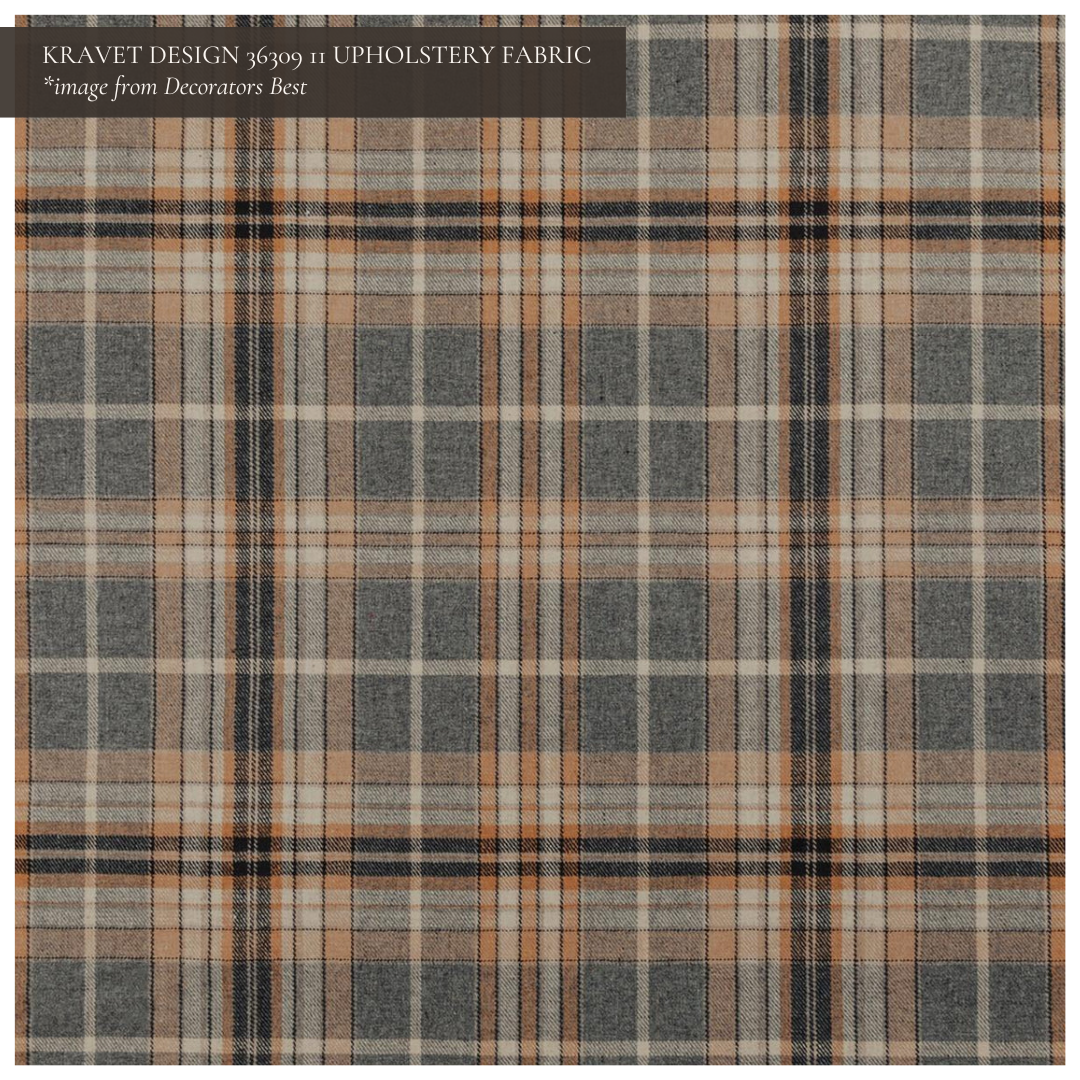
We often select Kravet fabrics for our projects and this design is just as lovely as many implemented in interiors we have designed. This Kravet plaid is woven in a blend of wool, polyester, nylon, and acrylic, which means it can stand up to daily use while retaining its structure.
The ground is gray with intersecting stripes in tan, camel, and black that are laid out on a 13.5″ horizontal and 13″ vertical repeat. At 55″ wide, it’s appropriately scaled for upholstery projects; the pattern can be centered and matched across panels. The balanced, fairly neutral color palette makes Kravet’s plaid a strong candidate for larger applications like sofas or sectionals, but we might apply it to a club chair.
Selecting Culturally-Rich Upholstery Fabric for Your Home with LUDC
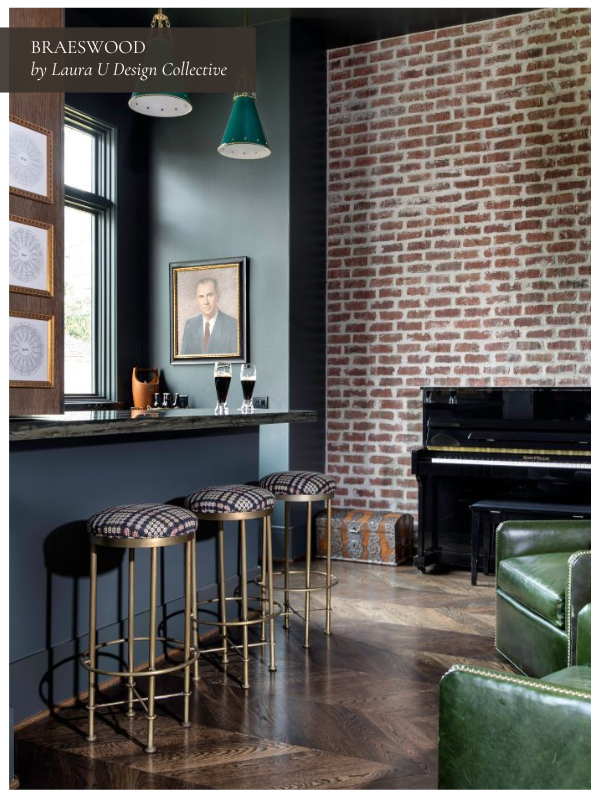
Plaid, tartan, and checked upholstery fabrics can infuse any space with your family’s unique history and character, but their quality depends on so much more than just the pattern or the designer. Durability comes from the fabric’s construction: its fiber content, weave, and finishing process.
Many traditional tartans are woven from wool, which is naturally resilient, resists soiling, and holds its color well. Wool blends (especially those mixed with nylon or polyester) are especially reliable in rooms that are used often or are at risk of food and drink splatter like bars or dining rooms. Cotton or linen plaids can be equally beautiful, but they often need backing or protective treatments to perform well on upholstery without significant wear in these contexts.
Crafting Custom Furnishings for a Meaningful Interior
These technical details are why working with an interior designer makes such a substantial difference when creating custom furniture for your home. Designers focus on the appearance and meaning of a fabric, of course, but they also verify rub counts, request dye lots to ensure color consistency, and confirm lead times so that yardage arrives in step with the installation schedule.
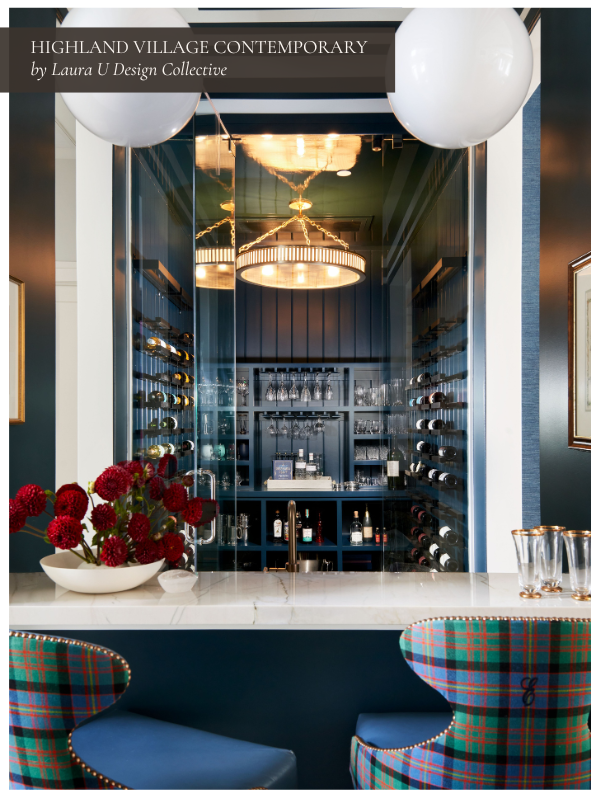
Clients who have strong ties to their heritage can also rely on their designer to coordinate the weaving of a custom tartan or plaid, as we did with our Highland Village Contemporary homeowners (pictured above). We ensured that their custom bar stools were both durable and deeply meaningful. This unique pairing of storytelling and specification is what turns a simple fabric choice into an impactful, enduring design decision.
Reach out to our team at Laura U Design Collective to create your own custom furnishings.



